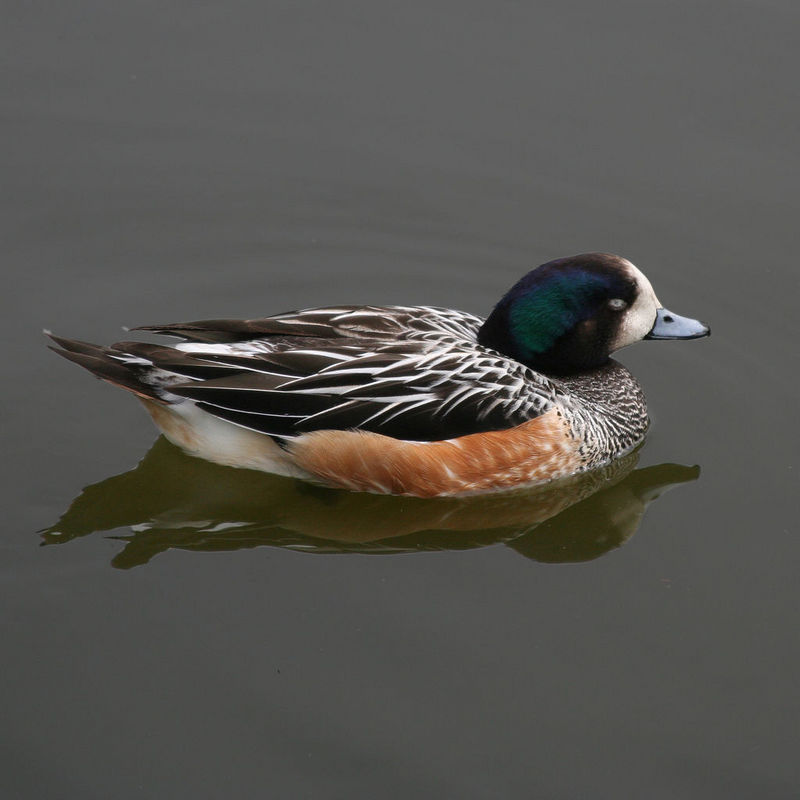|
| 질의: Small blue | 결과: 97번째/890 | |
Chiloe Wigeon (Anas sibilatrix) - Wiki
| 제목: | Chiloe Wigeon (Anas sibilatrix) - Wiki
| |

| 해상도: 1024x1024
파일크기: 76590 Bytes
등록시간: 2008:01:04 14:13:12
|
Chil??e Wigeon
From Wikipedia, the free encyclopedia
Order: Anseriformes
Family: Anatidae
[Photo] Chiloe Wigeon (Anas sibilatrix) at London Wetland Centre. Source: Flickr (www.flickr.com/photos/simpologist/13994242/). Date: Taken on May 14, 2005. Author: simpologist (www.flickr.com/photos/simpologist/).
The Chiloe Wigeon or Chil??e Wigeon (Anas sibilatrix) is one of three species of wigeon in the dabbling duck genus Anas. Unlike other wigeons, the sexes are similar (thought the male is often slightly brighter) and pairs are monogamous.
This duck is found in South America, on freshwater lakes, marshes, lagoons and slow flowing rivers.
http://en.wikipedia.org/wiki/Chiloe_Wigeon
| The text in this page is based on the copyrighted Wikipedia article shown in above URL. It is used under the GNU Free Documentation License. You may redistribute it, verbatim or modified, providing that you comply with the terms of the GFDL. |
|
댓글 |
|---|
| | 손님 |
|
Chil??e Wigeon (Anas sibilatrix)
(aka Southern Wigeon, Chilean Wigeon)
Chilean name: Pato real
Brazilian name: Marreca-oveira
The Chiloe Wigeon breeds from central Chile and Argentina southwards. Southernmost populations migrate to Paraguay, Uruguay and south Brazil during the austral winter.
It is a very attractive duck with the male showing iridescent green on the back of the crown and neck. His face is largely white and there is a small white patch below the ear-coverts. The female is similar but duller with less white and iridescent green on the head. Both sexes have a smallish blue-grey bill with a black tip. |
^o^
동물그림창고 똑똑전화 누리집
^o^
|
|
|